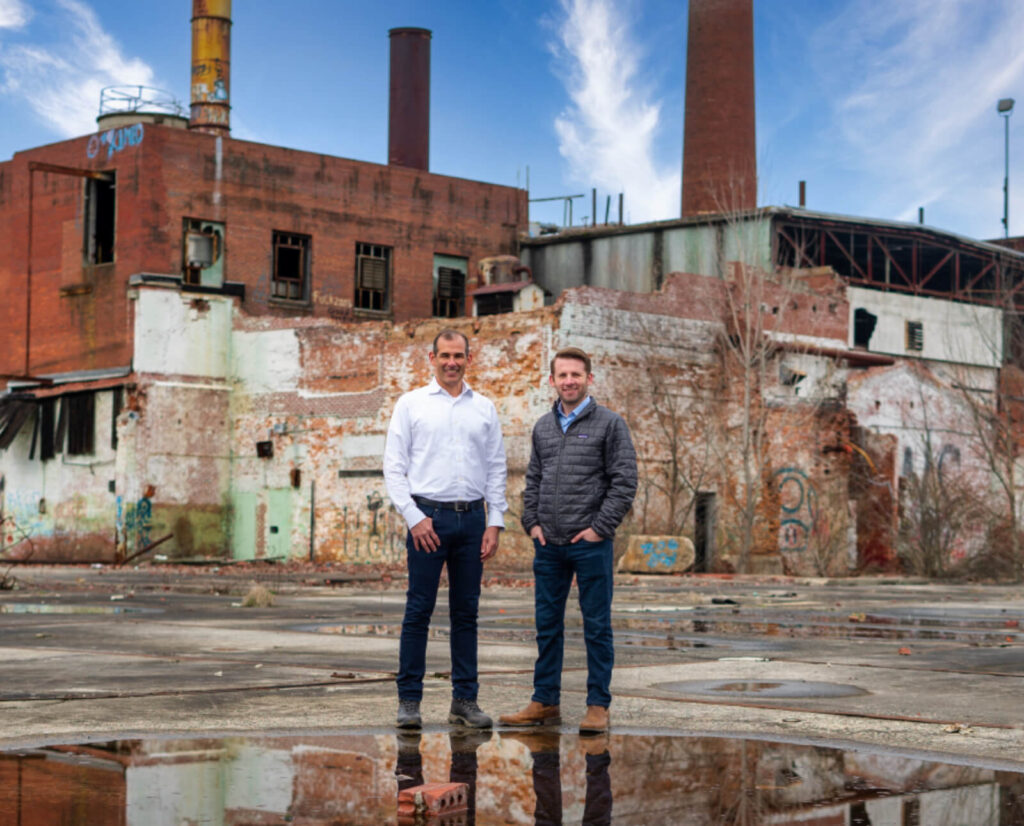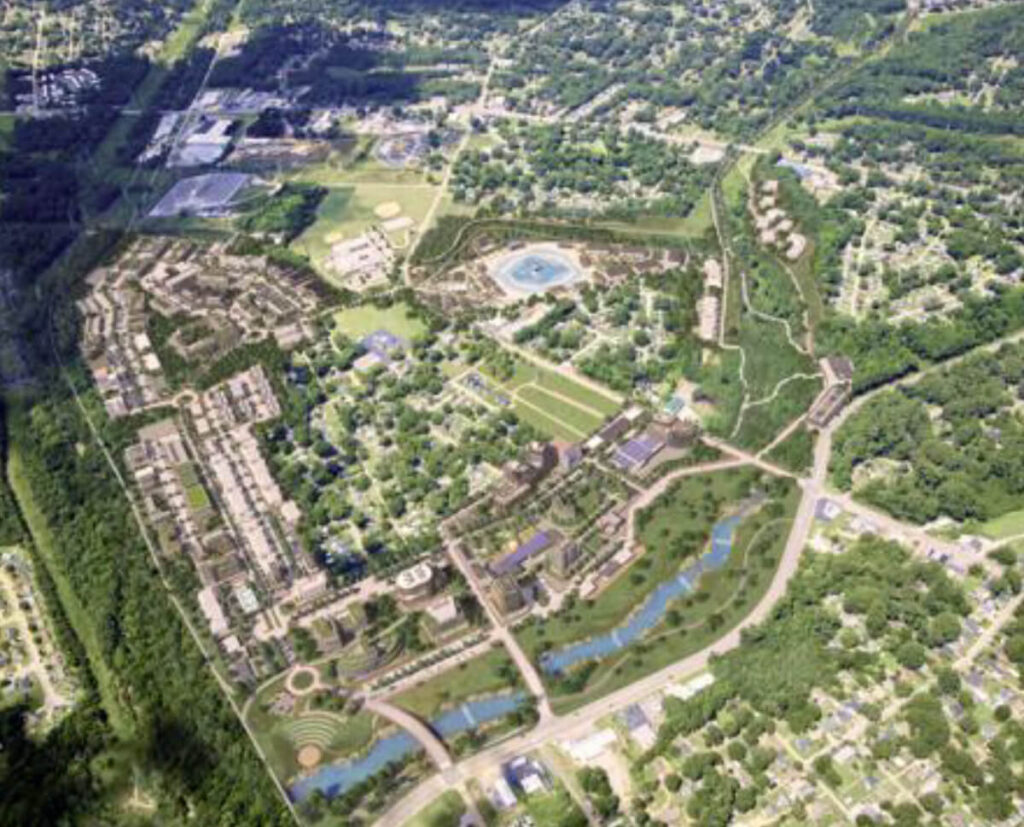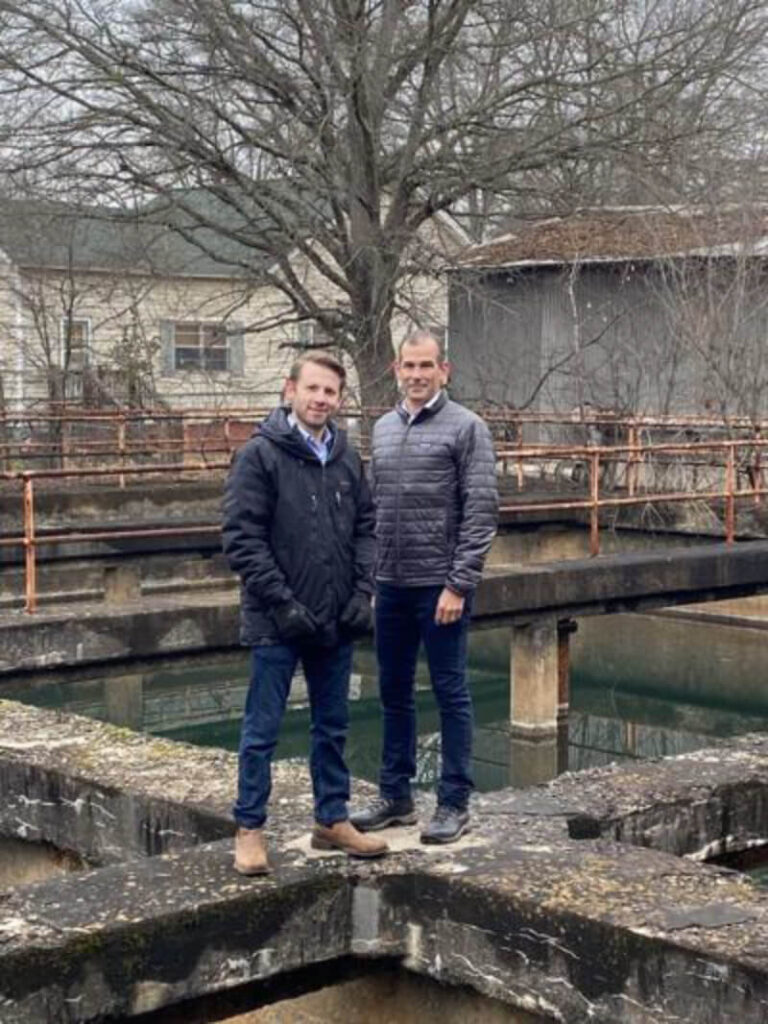Redevelopment of 250-Acre Former Superfund Site In Greenville Could Begin in May
 By Nathaniel Cary ncary@postandcourier.com
By Nathaniel Cary ncary@postandcourier.com
GREENVILLE — Warren Zinn confidently strode across a concrete walkway that separates pools of water at an abandoned water-filtration building on the former Union Bleachery mill site.
He posed for a photo along with business partner Dean Warhaft as the pair officially launched On the Trail on Feb. 7, a redevelopment of the long-dormant former textile hub in the Sans Souci community that may become one of Greenville’s largest mixed-use projects.
The site at the intersection of West Blue Ridge Drive and Old Buncombe Road sits about 3 miles north from Main Street in Greenville. Yet as the city and neighborhoods around it have flourished over the past decade, those 250 acres sat vacant and unused. A fire tore through a large part of the main mill building in 2017, the second major fire on the site this century.
Developers, mostly national multifamily residential builders, had inquired in recent years about purchasing the site or portions of it, but the state Department of Health and Environmental Control, which is acting as the receiver for the land since its previous owner went bankrupt, wanted a developer to purchase the entire site due to its massive environmental issues.
The site was listed as an Environmental Protection Agency Superfund site due to soil and groundwater contamination from its past uses. Cone Mills Acquisition Group, led by Miami-based developers Warhaft and Zinn, have stepped in as interested property developers to work with the state and EPA to voluntarily clean up the property and return it to use.
Greenville County Council in January approved a tax incentives package for up to 30 years to the developers in exchange for a minimum $200 million investment at the site. Warhaft previously said he expected the eventual investment to be much more than that minimum.
More than two-thirds of the land has now been delisted from the EPA’s Superfund list and the team is working with the EPA on a plan to address remaining contamination and any cleanup required on about 40 acres that remain on the Superfund list.
The original site plan showed the team anticipated it taking up to 10 years for all sections of the site to be delisted and put into normal use, but Warhaft has said the team is hopeful the EPA will issue a plan to address the contaminated areas much sooner.
The team plans to save much of what remains of the red-brick mill structure, its smokestack and the nearby brick building that was used as the mill’s water-filtration site. The mill building may be used as a sort of museum space open for the community to explore the area’s history. Warhaft envisions the filtration building becoming a distillery or brewery one day.
The team plans to break ground on the first structures as soon as May, likely as a multifamily project closest to the Swamp Rabbit Trail, which runs past the property, Zinn said.
Rob Howell, Avison Young senior vice president, has led marketing of the property since 2017 and said the scale of On the Trail was unmatched by other projects that had previously been proposed.
“We had many developers get excited about the site over the years, but we knew it would take a unique buyer with a big vision to step into the ring and tackle this complicated deal,” Howell said.
The team has also hired Hood Design Studio of Oakland, Calif., to design the landscape architecture of the site, Warhaft said. Hood is also working on the design of the International African American Museum in Charleston.
The project would eventually include up to 3.5 million square feet of office and employment space, 2,000 apartment and townhouse units, a 200-room hotel and nearly a million square feet of grocery stores, retail, restaurants and other commercial space.
The site would maintain a floodway undeveloped as a buffer along Langston Creek. It would include an amphitheater, park space and more than 10 miles of additional multiuse paths to connect to the Swamp Rabbit Trail.
Across Old Buncombe Road from the main mill site, an empty red-clay field sits barren and set back from the road. It once served as the water reservoir for the bleachery and may one day hold water again. The developers said they’re looking into building a man-made surf lake as an amenity on the site, which would allow them to ring the lake with buildings.
As he crunched across broken glass windows and scattered bricks and bemoaned the vandals that recently stole a historic sign on the property and broke old marble countertops in another area, Warhaft said the project could be transformative for Greenville.
They envision a new urban center, one of the few remaining opportunities to shape a large portion of vacant land and to reconnect a historic mill village that’s been cut off by a Superfund site for decades.
If it goes according to Warhaft and Zinn’s plan, the land around the former bleachery will soon reopen to the public more than 20 years after fences and gates closed access.



